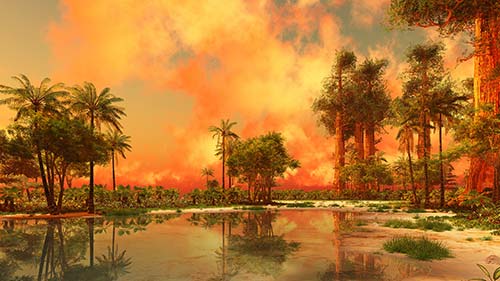
The landscape subject is not so much about a geographical locale, but more a metaphor for a psychological state. It evokes feelings and moods so that the viewer enters an environment with immediate emotional responses. At first glance it appears realistic, in some cases even photographic, with inviting naturalistic details that lure and seduce. But, upon closer inspection the seemingly realistic details shift to reveal a strange virtual world associated more with an interior “reality” than an exterior one.
My starting point is never a landscape seen in reality, but an abstraction, a constructed calculation of archetypal space. This construct is then transformed step-by-step through simulated light, atmosphere, water, terrain and flora and to conjure memories that translate as complex emotions rather than a specificity of place.
The Archetypes:
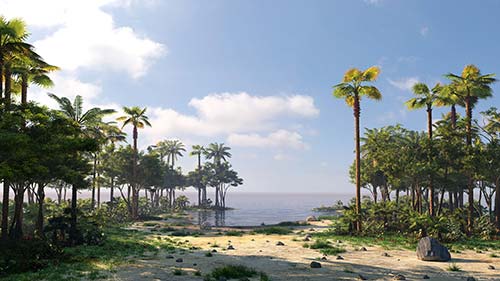
The End of the World
Imagine a place where space ends and time stands still. On every island there is a stretch of coast where the land slips into a haze. The sun does not give warmth. It is barren at earth’s far end, Gazing out in this direction all paradise, all happiness lies at your back. A vortex draws you into emptiness.
The Last Part of the Trail
An obstruction blocks the view of the trail ahead. But, just one last turn leads through the gloom. Just run, faster, and faster… then out of breath!
The Cave
A space like a gullet—narrowing and widening—a prenatal trauma?
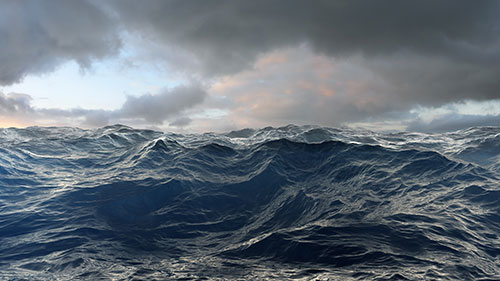
The Drowning
The wave approaches…how clear and brilliant the water... the last glance of terrifying beauty.
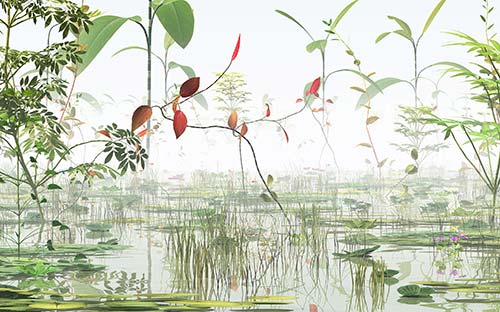
The Paradise
It is the metaphor for life’s ultimate. It rules out instincts and longings to be at one with the world.
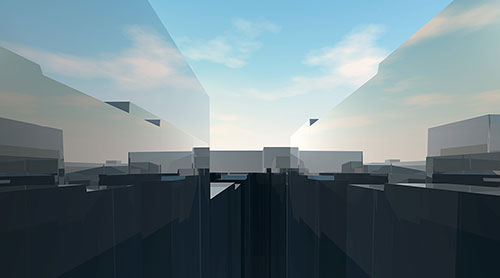
The Cities
One can wander through these cubic structures and colored patterns to view them from different angles, much like moving through spaces and mazes in the urban environment. Purged of architectural embellishment and pared to essential 3-D form, these abstract spaces remain rich vessels for associative memories of streets and skylines we have known.
Gerhard Mantz, Berlin 1998 and New York 2004
Translation by Jay Judge